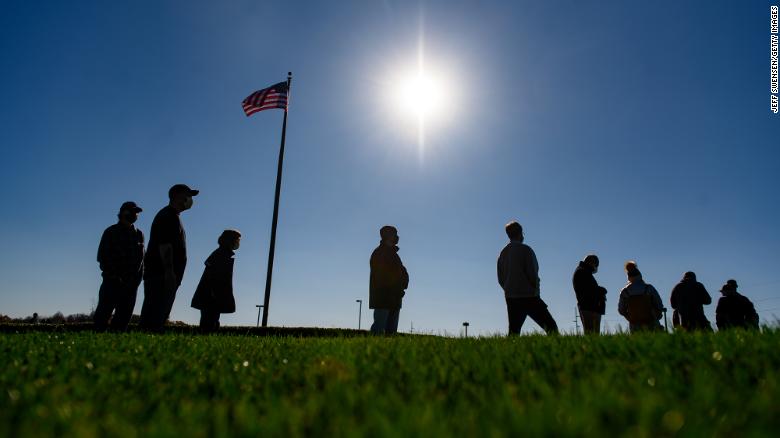Even as the fight for the White House continues on, we are beginning to get a clear picture of what the 2020 electorate looked like — and cared about — via the exit polling.
I spent the morning looking through the data — compiled via a non-partisan election consortium and reflecting more than 15,000 interviews with voters — and drawing some conclusions about the broad trends we will be looking at and talking about not just for months but years to come. My big takeaways are below.
(You can check out the exit poll yourself here. Keep in mind that these are early numbers, and the breakdowns we see so far in the exit data may change some.)
America votes: What you need to know
1. Donald Trump made real improvements with non-white voters: On Tuesday, President Donald Trump won 32% of Latino voters and 12% of Black voters. Compare that to Trump’s 28% among Latinos in 2016 and 8% among Black voters. That’s significant, period. Full stop. Especially for a party that has publicly fretted that it is becoming increasingly narrow and white in its national appeal. (Trump won 57% of the white vote in both 2016 and 2020, according to exit poll data.)
In several key states, Trump’s showing among Latinos likely delivered him victory. Former Vice President Joe Biden won Latinos in Florida 52% to 47%, a major come-down from the 27-point margin that Hillary Clinton enjoyed with that group in 2016. In Texas, Biden beat Trump among Latinos by 19 points, a significant decline from Clinton’s 27-point margin among Latinos in the state in 2016.
2. The partisan composition of the 2020 electorate looks a lot like the 2016 electorate: In 2016, 36% of voters identified as Democrats, 33% as Republicans and 31% as independents. Those numbers are quite close to what the 2020 electorate looked like: 37% Democrats, 35% Republicans and 28% independents.
3. It’s still the economy (stupid): Wondering how Trump overperformed nationally? Look to the economy — or, more accurately — to the perception of the economy in the electorate. More than one in three voters (35%) said that the economy was the most important issue in deciding their vote. And among that group, Trump won by 65 points! So for voters who voted on the economy primarily, they voted strongly for the president.
4. The white college vs. white non-college divide remains: Biden did better in 2020 among both white voters with and without college degrees than Clinton did in 2016. But the divide that opened up among those white voters in 2016 was again on display this time. Biden and Trump tied among white voters with college degrees, while Trump won white voters without college degrees by 29 points. Those numbers are down for Trump from 2016, when he won college educated white voters by 3 points and non-college white voters by 37 points.
5. The suburbs have turned: In 2016, Trump won suburban voters by 4 points. In 2020, Biden won them by 3 points — a continuation of the gains Democrats made in the 2018 midterm election, when the party pulled into a tie with Republicans in the suburbs. What’s fascinating is that despite the gains Biden made in suburban America, Republicans in the House actually won (or won back) a number of suburban districts, including the Oklahoma City 5th district and the St. Louis suburban 2nd district.
6. Men moved toward Biden: Unlike in 2016, when Trump beat Clinton by 11 points among men, the race among men in 2020 looks to be, effectively, a tie: Trump 49%, Biden 48%. Women, on the other hand, stayed steady. Biden won them by 13 points, the same margin Clinton enjoyed in 2016.
>>>>
